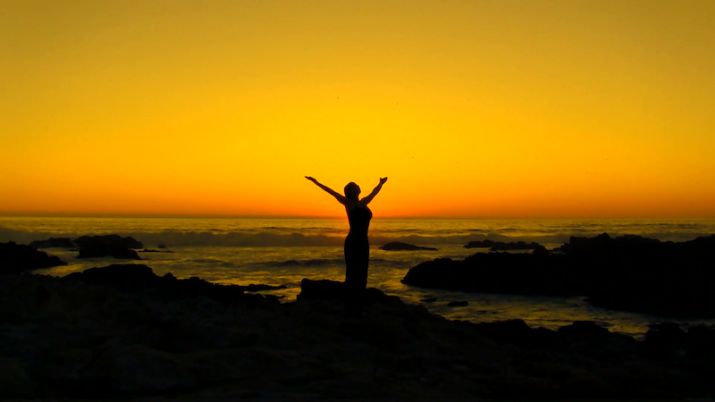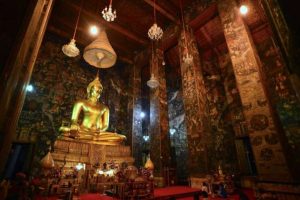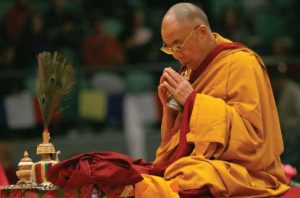
In many Buddhist texts, both within the Tripitaka and elsewhere, are complex scientific discussions about the relationship between body parts and the mind or thought; processes such blood circulation, digestion and the digestive tract, and medical treatments. The Mahavagga of the Vinaya Pitaka of the Pali Canon offers a detailed description of the treatment of physical diseases. The book is divided into ten chapters or sections. In the sixth chapter, the Buddha is said to have described different diseases and methods and medicines used to cure Buddhists of health problems.
Here we will explore the ways and means of medicinal and therapeutic practices advised by the Buddha. This advice might be applicable to contemporary concerns.
The Buddha was aware that the prevention of ailments is preferable to curing them. Ven. Dr. Sunanda Putuwar notes: “The Buddha said that one should live in a suitable location or environment (patirupadesa vasa) for good health and peace of mind. To preserve good health one should take moderate amount of nutrition food at regular times. Moderate meals are soon digested making one feel comfortable, and protect the lifespan (ayupalayamti). With regard to moderation at mealtimes, one still wishes to continue eating two or three more mouthfuls, but then stops eating and drinks some water to fill the rest of the stomach. It is always beneficial to all people . . . to have some idea of the matters and actions profitable or unprofitable to one’s health. Many diseases arise due to careless actions, bad food and drinks. To cure many diseases, good diet, medicine, and loving care are important.” (National Taiwan University Library)
Nalinaksha Dutt says of the sixth chapter of the Mahavagga:
The sixth chapter discusses the medicines permissible to sick monks and nuns. It relates how, at the instance of Jivaka, the famous physician, the Buddha allowed the sick monks to have all the medical and surgical aids they required. This chapter contains a very interesting account of surgical operations and instruments, of drugs and there preparation, of containers and storehouses for medicines, and lastly, of medical aids such as hot baths and special diets which included fruit juice, milk products and sometimes meat broth. (Dutt 2009, 144)
The description of medicines and treatments for diseases in the Mahavagga are as follows:
1. Because the monks were suffering from autumnal diseases, they had vomited out their porridge and food to the extent of looking deformed, rough, dull, and pallid. To cure the disease, the Buddha advised the patients to switch to a diet of fat, ghee, oil, honey, and molasses.
2. The Buddha said that medicine can be made from animal products, roots from vegetables and fruits such as terminalia chebula, ginger, fruits, vegetables, bananas, pepper, chillies, and salt-based products such as marine salt, black salt, granulated salt, and bit salt.
3. If one is suffering from scabs, itching, scars, spleen problems, or bad body odor, he or she should use dung, clay, and pudding-colored powder.
4. If someone is possessed by a malicious spirit, the Buddha advised consuming raw meat and fresh blood to counter possession.
5. Patients suffering from eye diseases should use metallic products, a type of dense sprout found in the river bed, and candlewax. They can also use sandalwood, gooseberry, and chronuser.
6. If a person is suffering from a headache, that patient is instructed to smear tobacco leaf powder on the head or through the nose by smoking a pipe.
7. Patients suffering from arthritis should be massaged with applied aromatic oil.
8. Instructions are also given for patients suffering from continuous sweating. The Buddha gave four remedies for sweat emission: (a) sleeping on the leaves of various trees which absorb sweat, (b) applying sand and soil, massaging oil on the body, and wiping the body with a damp cloth, (c) throwing water of various tropical leaves to sweat out, and (d) having a hot water massage.
9. In order to cure patients suffering rheumatic arthritis, the Buddha permitted a limited bleeding out of the patient to remove poisoned blood.
10. Oil and foot medicines should be applied to blisters that have burst.
11. If a graft or boil is growing, then the Buddha instructed that an operation should be conducted.
12. To treat acne or wounds, the Buddha has said to have advised purifying them with a mild acid before soothing the area with cloves, salt, and oil, then applying the bandage.
13. Those who suffered snake bites were advised to consume a decoction of dung or excrement (gutha), urine (mutta), aches (charika) and clay or earth (matika).
14. People who were poisoned were also to be given stool to eat.
15. In order to treat diarrheal diseases generated by drinking alcoholic beverages, the Buddha suggested consuming clay soil mixed with water.
16. Sufferers of severe constipation were to drink dry rice crushed and mixed with water.
17. Patients suffering from jaundice or bilirubin were to consume a compound of cow’s urine and yellow myrobalan.
18. The is Buddha said to have suggested the application of sulfur in the treatment of dermatitis.
19. When the body is uncomfortable, the Buddha advised drinking whatever would loosen the body’s stool and various types of juices.
20. The Buddha asked sick people to consume molasses and drink clean water.
21. To maintain a healthy body, the Buddha advised eating foods such as curd, sugarcane, ghee, mango, blacksmith, honey, grapes, silk and pomegranate juice, sugarcane juice, all kinds of vegetables and hard foods made from flour. (National Taiwan University Library)
While the counsel found in the Mahavagga might seem strange or even medically unsound today, it must be seen in the context of a monastic community within a pre-literate society that was concerned with specific health issues commonplace in Greater Magadha or ancient northern India: leprosy (kuttham), ulceration (gandho), eczema (kilaso), consumption (soso) and epilepsy (apamaro), malaria (ahivatakaroga or “snake-wind disease”), and diabetes (madhuragu). The majority of the Mahavagga’s medical solutions were tailored mostly to problems of skin or stomach hygiene, as well as a concern with blood and infected bodily fluids.
The Mahavagga’s medicinal insights might not be used in modern medicine, but it is still used in local traditional medicinal systems and regional (not all) disciplines of Ayurveda. This clinical debt to the Buddha is acknowledged in countries like China, Japan, and Tibet, and the association of the Buddha with the persona of a physician (culminating in the worship of the Medicine Buddha Bhaishajyaguru) may not have been simply allegorical.
References
Nalinaksha Dutt. 2009. “The Buddha’s Disciplinary Code.” In 2500 Years of Buddhism, edited by P.V. Bapat. Publication Division: Ministry of Information and Broadcasting, Government of India.
See more
The Clinical and Hygienic Concerns of Lord Buddha (National Taiwan University Library)












